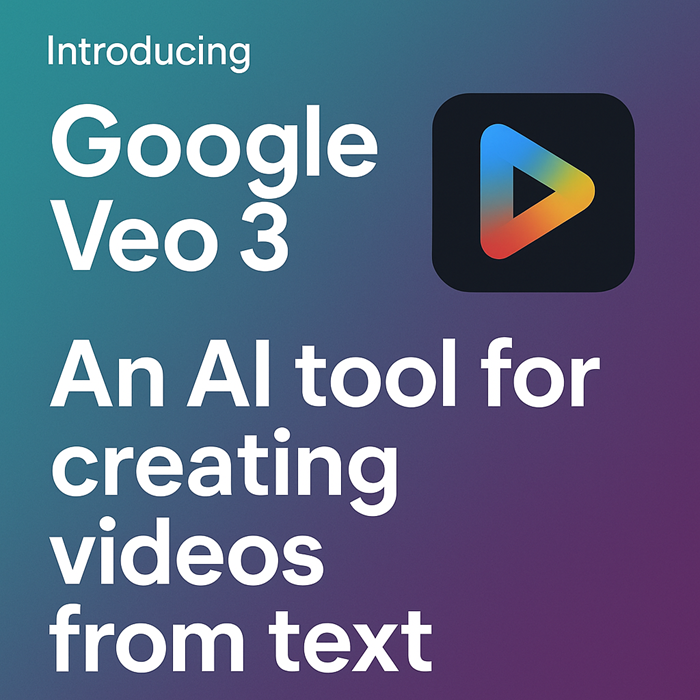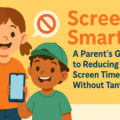Introduction to Google Veo 3
In the rapidly evolving landscape of generative AI, Google has once again pushed the boundaries with the release of Google Veo 3, its latest innovation in text-to-video technology. Designed to empower creators, marketers, educators, and filmmakers, Veo 3 can generate high-resolution, realistic videos from simple text prompts. As the demand for visual content skyrockets, tools like Google Veo are set to redefine content creation workflows.
This blog post explores everything you need to know about Google Veo 3, from its core features and real-world applications to pricing, alternatives, and SEO-friendly use cases.

What is Google Veo 3?
Google Veo 3 is an AI-powered text-to-video generation tool developed by DeepMind and integrated into Google’s suite of generative AI products. Building on the capabilities of its predecessors, Veo 3 can create video clips that range from realistic cinematic shots to animated sequences with impressive consistency, coherence, and attention to detail.
Announced at Google I/O 2025, Veo 3 incorporates the latest advancements in video diffusion models, natural language understanding, and visual storytelling.
Key Features of Google Veo 3
1. Text-to-Video Generation
Just type a prompt like “a time-lapse of a mountain sunset” and Veo generates a 1080p video clip reflecting that exact scenario.
2. Support for Various Video Styles
Veo supports:
- Cinematic storytelling
- Animated clips
- Stylized graphics
- Slow motion, time-lapse, and drone views
3. High-Resolution Output
Veo 3 can render videos up to 1080p HD quality, with future support for 4K anticipated.
4. Consistent Frame Transitions
Unlike earlier models, Veo 3 ensures smooth and contextually accurate transitions across frames.
5. Multimodal Inputs
Besides text, users can input images, sketches, and reference videos for more control.
6. Editing Tools & Timeline Control
Users can now adjust video timelines, modify frames, and apply scene-by-scene customizations.
How Does Google Veo 3 Work?
Google Veo 3 uses a combination of diffusion models, transformers, and video segmentation algorithms to convert text into video. Here’s a simplified breakdown:
- Prompt Analysis: The model breaks down the text into actionable visual elements.
- Scene Generation: A draft scene layout is created using AI vision algorithms.
- Rendering: The diffusion model creates frames while maintaining coherence.
- Post-Processing: Color grading, motion smoothing, and style enhancements are applied.
Use Cases of Google Veo 3
1. Marketing and Advertising
Create high-quality product videos, social media reels, and brand trailers quickly and affordably.
2. Content Creation
YouTubers, influencers, and bloggers can generate b-rolls or even entire stories using Veo.
3. Education and Training
Produce explainer videos, animated lessons, and virtual tours in minutes.
4. Entertainment & Film
Independent filmmakers can prototype scenes or create full animations without expensive equipment.
5. Real Estate & Architecture
Visualize property layouts, future constructions, or interior designs from textual briefs.
6. News Media
Generate supplementary visuals for breaking news or informative content quickly.
Google Veo 3 vs Other Video Generation Tools
| Feature | Google Veo 3 | Runway ML | Pika Labs | Sora (OpenAI) |
|---|---|---|---|---|
| Output Quality | 1080p HD | 720p | 1080p | Up to 1080p |
| Style Support | Cinematic, Animated, Stylized | Limited | Animated | Cinematic |
| Frame Consistency | Excellent | Moderate | Good | Excellent |
| Editing Tools | Timeline, Frame Edits | Basic | Limited | Not Public Yet |
| Multimodal Input | Yes | No | No | Yes |
Advantages of Google Veo 3
- Superior video quality
- Smooth and realistic transitions
- Multiple input types
- Scene-level customization
- Free to use (currently in experimental release)
Limitations of Google Veo 3
- Limited access (invite-only or waitlist)
- Requires a Google account
- Some prompts may render inaccurately
- Processing time can be long for detailed prompts
How to Access Google Veo 3
As of now, Google Veo 3 is available to select users through Google Labs. To gain access:
- Visit Google Labs
- Sign in with your Google account
- Join the Veo waitlist
- Wait for an invitation via email
Once granted access, users can start experimenting with prompts directly from the browser.
Google Veo 3 Pricing
Currently, Google Veo 3 is free under the experimental release program. However, Google may soon roll out subscription plans for creators, agencies, and enterprises with tiered pricing like:
- Free Tier: Limited video lengths and styles
- Pro Tier (~$20/month): HD rendering, more prompts, priority access
- Enterprise Tier (custom pricing): API access, team collaboration, advanced editing tools
Best Practices for Using Google Veo 3
- Be descriptive: Add context like lighting, camera angle, and mood.
- Limit prompt length: Keep prompts concise yet specific.
- Use references: Add images or rough sketches for better accuracy.
- Review and tweak: Use editing tools to refine outputs.
SEO Applications of Google Veo 3
1. Enhance Blog Engagement
Use AI-generated videos to support your blog content. For example, if you’re writing about a travel destination, create a scenic video using Veo.
2. YouTube & Shorts Content
Easily produce videos for YouTube Shorts, Instagram Reels, or TikTok using text prompts.
3. Video Thumbnails and Banners
Extract eye-catching frames from Veo videos to use as thumbnails or banners for SEO-rich pages.
4. Explainer Videos for Product Pages
Turn product descriptions into quick demo videos, increasing time on site and conversion rates.
Google Veo 3 and AI Ethics
With great power comes great responsibility. Veo 3 incorporates built-in safeguards against misuse:
- Watermarking AI-generated videos
- Banning harmful or sensitive prompts
- Review systems and moderation
Creators must still ensure their content complies with copyright laws, fair use, and ethical standards.
The Future of AI Video Generation
Google Veo 3 sets a new benchmark in AI-powered video creation. As models become more efficient and affordable, we could see:
- Integration with Google Workspace (Docs, Slides)
- Mobile app for on-the-go creation
- 4K rendering and multi-scene storytelling
- Voice and audio synchronization
This technology is poised to democratize video production, making it accessible to hobbyists, startups, and enterprises alike.
FAQs about Google Veo 3
1. Is Google Veo 3 free to use?
Yes, currently it is free under the experimental access program.
2. Can I generate videos in different languages?
Yes, Veo understands and supports multiple languages, but English yields the best results.
3. Does Veo 3 add sound or music?
No, Veo 3 currently does not support audio. However, you can manually add sound later.
4. Is Veo 3 better than Sora by OpenAI?
It depends on your use case. Veo offers more editing flexibility, while Sora excels in long cinematic storytelling.
5. Can I monetize videos created using Google Veo 3?
Yes, provided the content complies with YouTube/AdSense copyright and originality policies.
Conclusion
Google Veo 3 is a game-changing AI tool in the world of content creation. From generating cinematic scenes to enhancing SEO strategies, Veo 3 offers unmatched flexibility, quality, and creative control. As AI-generated video continues to evolve, creators who embrace tools like Veo early will gain a significant edge.
Whether you’re a marketer, educator, or artist, Google Veo 3 is your gateway to the future of storytelling.
For more such updates in Digital Marketing follow Popnewsblend.

Hi, I’m Prashant Jain — a curious soul, storyteller, and content creator at heart.I’ve always been drawn to the world of entertainment, travel, sports, health & lifestyle — not just as a writer, but as someone who genuinely lives these experiences. Whether I’m binge-watching the latest OTT series, exploring offbeat spiritual destinations in India, or diving deep into wellness routines and cricket match insights, I love sharing what I discover with like-minded readers.
PopNewsBlend is my way of blending personal journeys with meaningful stories — ones that inform, inspire, and keep you ahead of the curve. Everything I write comes from real observations, hands-on experiences, and a deep passion for understanding the world around us.







